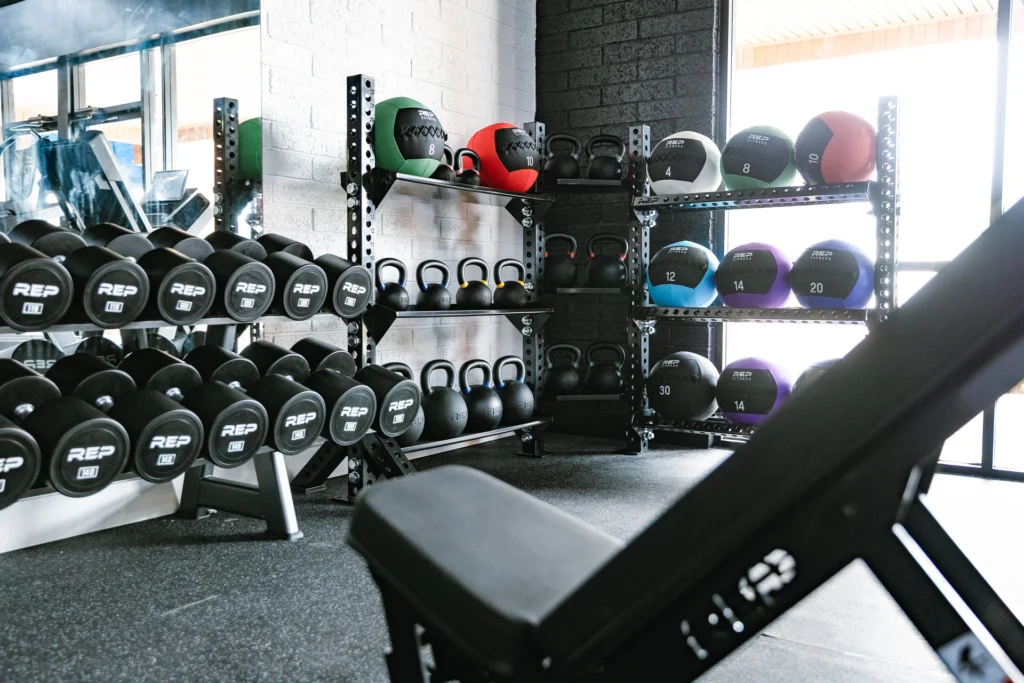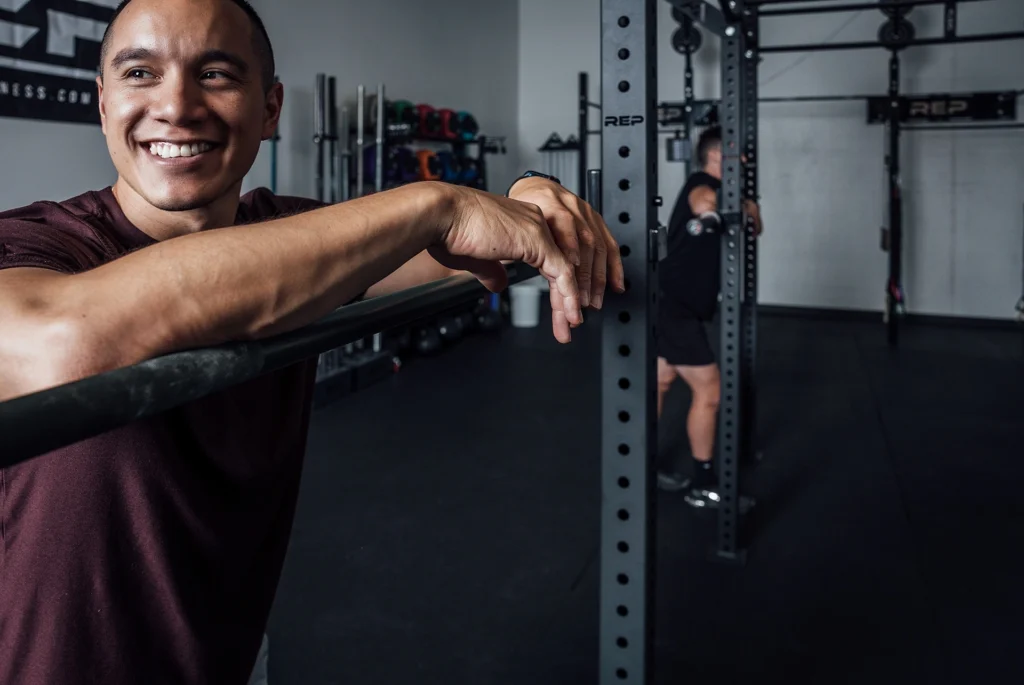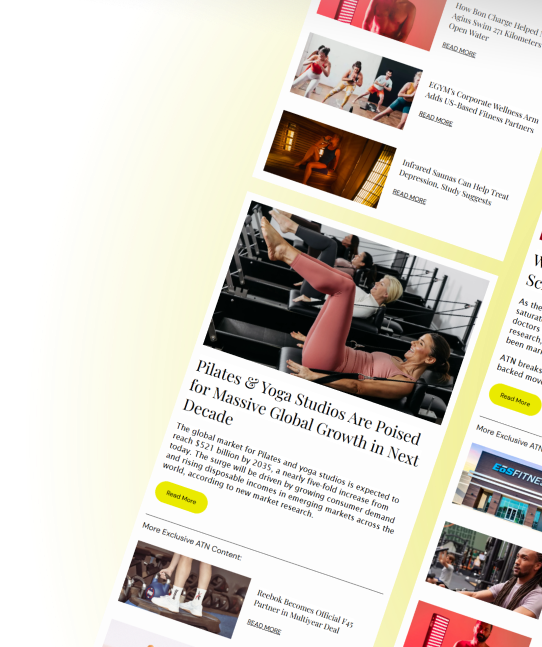
Strength training is more than a fitness trend—it’s the foundation for maintaining muscle, bone density and independence for life. REP Fitness is designing equipment to make that possible for everyone, at every stage.
Aging may be inevitable, but decline doesn’t have to be. The loss of muscle mass, bone density, balance and mobility that’s often accepted as “part of getting older” is, in reality, something that can be reversed — and strength training is the most powerful tool to do it.
“Strength training is the most effective way to reverse this aging process,” says REP Fitness Co-CEO and founder Shane McGrotty. “It’s critical regardless of age.”
For Jon Little, REP’s COO, the value goes beyond simply extending years. “Strength training as we age has the ability to extend health span — the portion of one’s life where you are generally independent, and able to pursue life without health limitations. The goal is for health span and life span to match.”
Here, the lens shifts from human performance to business performance. The same principles that help an individual stay strong into their 70s or 80s can become a driver for gyms to attract new members, retain existing ones and serve a wider range of the community. REP Fitness is helping operators do just that. And not with equipment alone, but with a product ecosystem that’s modular, accessible and built for strength at every life stage.
Strength Training for Every Body

For decades, gyms have targeted strength training toward younger demographics or competitive athletes. But in the longevity era, the fastest-growing market segments are older adults looking to maintain function, middle-aged members prioritizing healthy aging and injury prevention, and younger members training for quality of life rather than aesthetics.
“Gyms that recognize this trend can differentiate themselves in a big way,” says McGrotty. “Strength training isn’t a niche offering; it’s a baseline for living well. That’s a message that resonates across age groups.”
The numbers back it up. Research shows that resistance training reduces the risk of chronic disease, prevents falls and preserves cognitive function — benefits that appeal to every member category. But tapping into this opportunity requires more than adding a rack in the corner. It requires thoughtful programming, member education and equipment that can adapt to a variety of needs and abilities.
REP’s expertise extends beyond equipment. As practitioners of strength training themselves, the team designs thoughtful, member-focused layouts that make training accessible to all age groups and facility types. Combined with solutions-oriented business support, that consultative approach ensures operators have not only the tools but also the strategies to succeed.
Further, REP’s approach to product development is rooted in versatility and accessibility. That means commercial-grade racks, benches and cable systems that can be configured for group strength classes, personal training or open gym, and scaled up or down depending on space and budget.
“We think about adjustability and progression,” says Little. “A member in their 20s training for a Spartan Race and a member in their 60s rehabbing a knee should both be able to walk up to the same station and get an effective, safe workout.”
For gyms targeting longevity programming, this adaptability is key. Machines with multiple adjustment points allow trainers to tailor movement patterns for mobility limitations. Functional training rigs can be paired with bands, light kettlebells and stability tools for balance-focused work. And compact modular systems make it possible to integrate strength into studios, wellness lounges or recovery zones without building a separate weight room.
REP also understands that in the business of longevity, it’s the member experience — not just the equipment — that drives success. A facility that markets strength training for life needs to back it up with intentional layout, approachable onboarding and consistent engagement.
“Equipment is only one part of the equation,” McGrotty notes. “It’s about creating an environment where people feel comfortable starting, confident continuing and supported in progressing.”
That means clear signage and tutorials for self-guided members, programming that connects strength work to real-life outcomes and training staff who can bridge the gap between age groups.
Longevity as a Revenue Stream

For operators, longevity-focused programming has clear business benefits.
Little points out that the stickiest members are often those who see direct, functional benefits from their training. “When someone notices they’re moving better, their back doesn’t hurt anymore or they can keep up with their grandkids, that’s the kind of progress that keeps them coming back — for years.”
Some gyms are even creating “Strength for Life”–style membership tiers, bundling small-group functional strength training, periodic assessments and recovery services. Others are integrating REP equipment into medical fitness partnerships, physical therapy clinics and corporate wellness programs — extending reach well beyond traditional fitness audiences.
REP’s collaborative approach is already being put into practice with partners worldwide, from boutique concepts like Vasas Fitness to global players such as F45 Training. Through its partnership with F45, REP has equipped studios across the franchise with Functional Racks that elevate strength training capabilities while maintaining the brand’s coveted group training experience.
And for REP, the relationship doesn’t end once the racks are installed.
“We’re not in the business of selling and walking away,” says McGrotty. “We want to be a partner in building programs that work — for the member and the business.”
That means helping operators design floor plans that flow from mobility warm-up to strength work to recovery, selecting equipment packages that match member demographics and providing training resources to staff.
The longevity movement shows no sign of slowing. As awareness grows and science continues to reinforce the role of strength training in healthy aging, gyms that position themselves as leaders in this space will have a significant advantage.
For REP, it’s about more than capitalizing on a trend — it’s about redefining the role strength plays in life.
“Strength is foundational,” says Little. “It’s not just for athletes or aesthetics — it’s for anyone who wants to live fully, for as long as possible. And that’s a mission we’re proud to support.”
